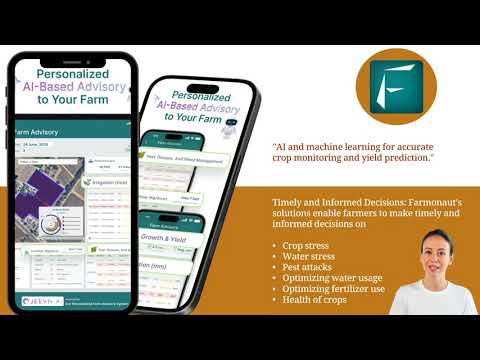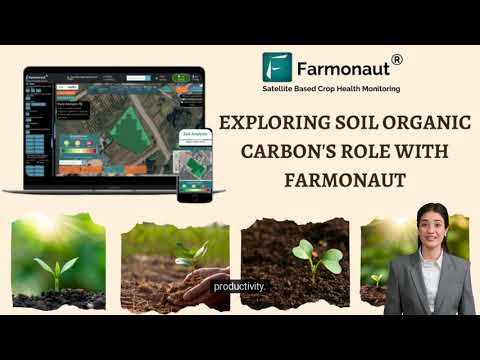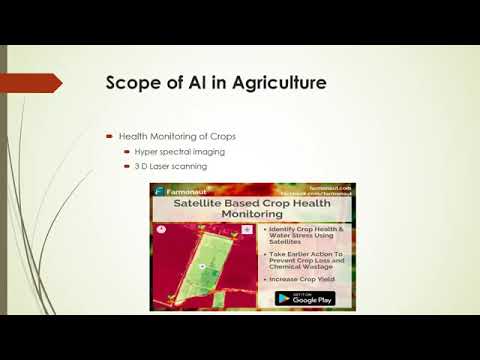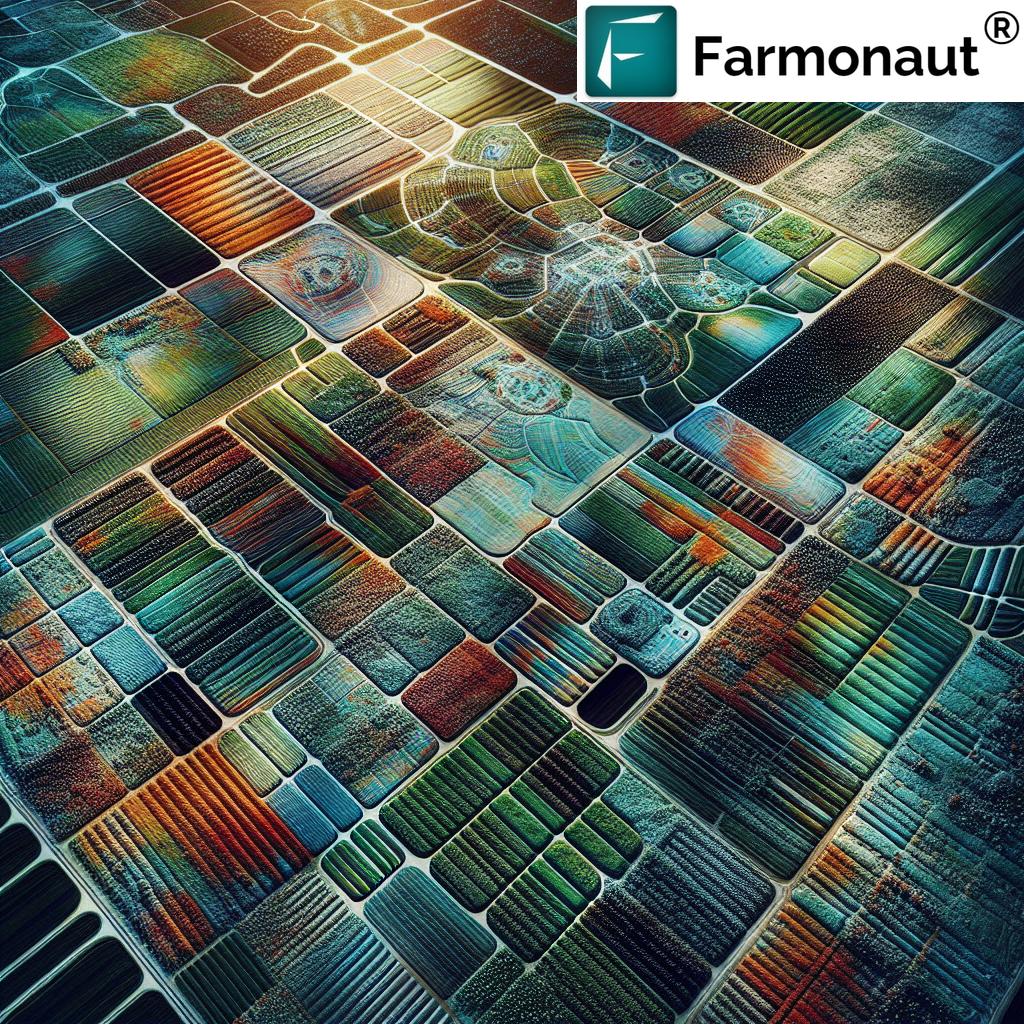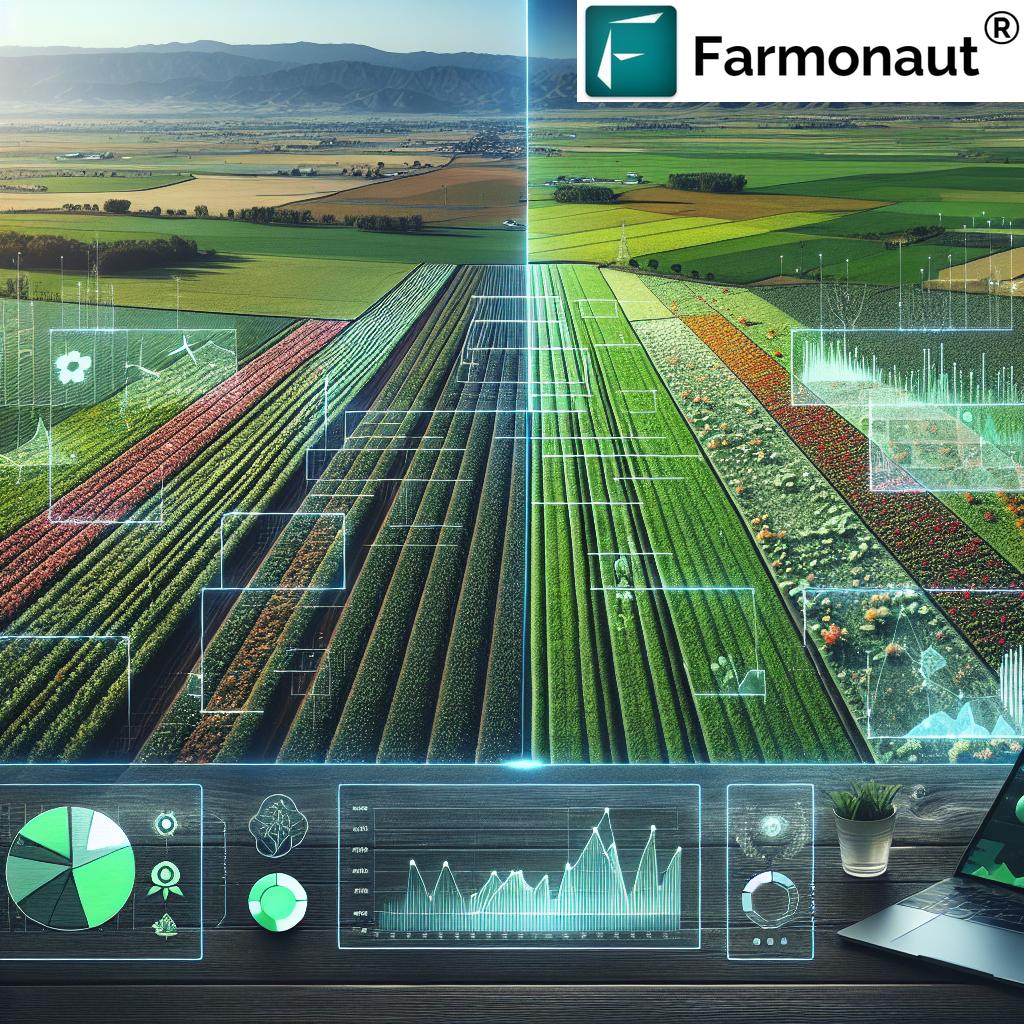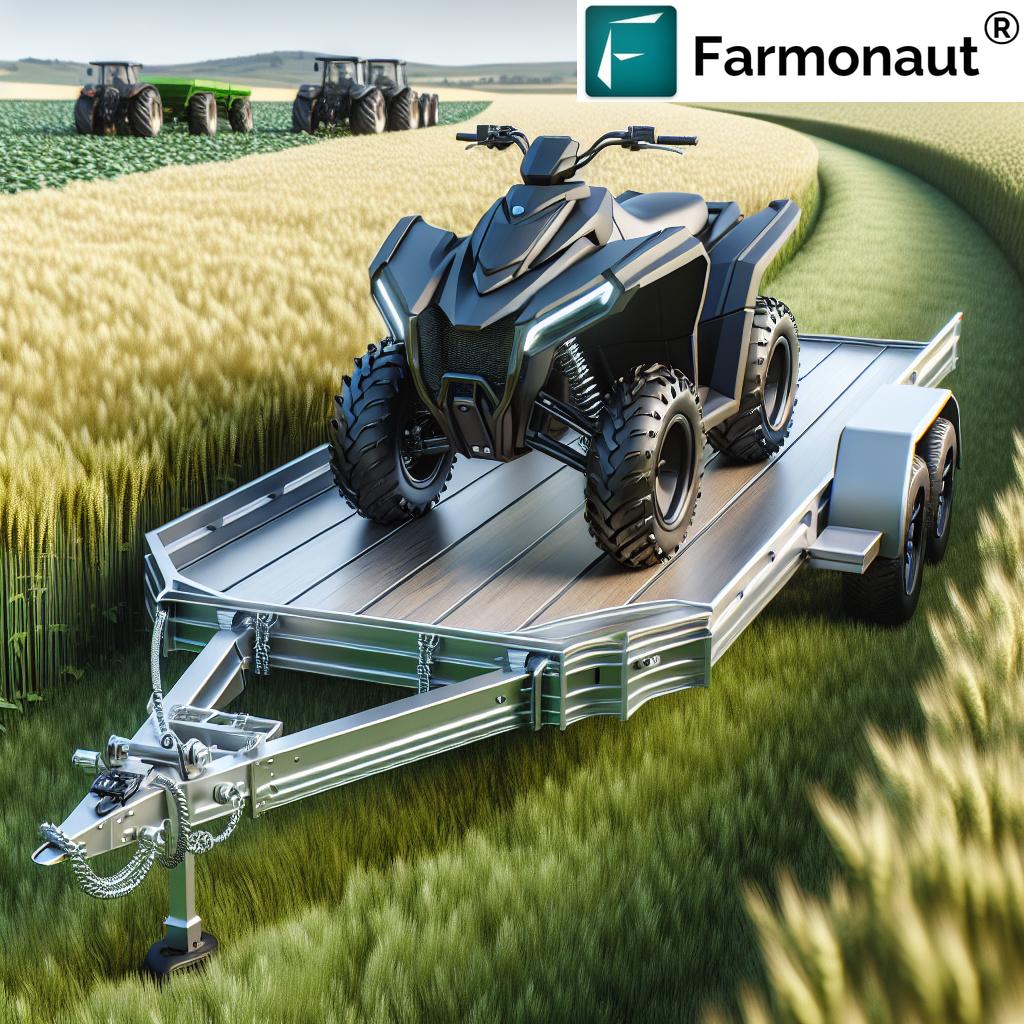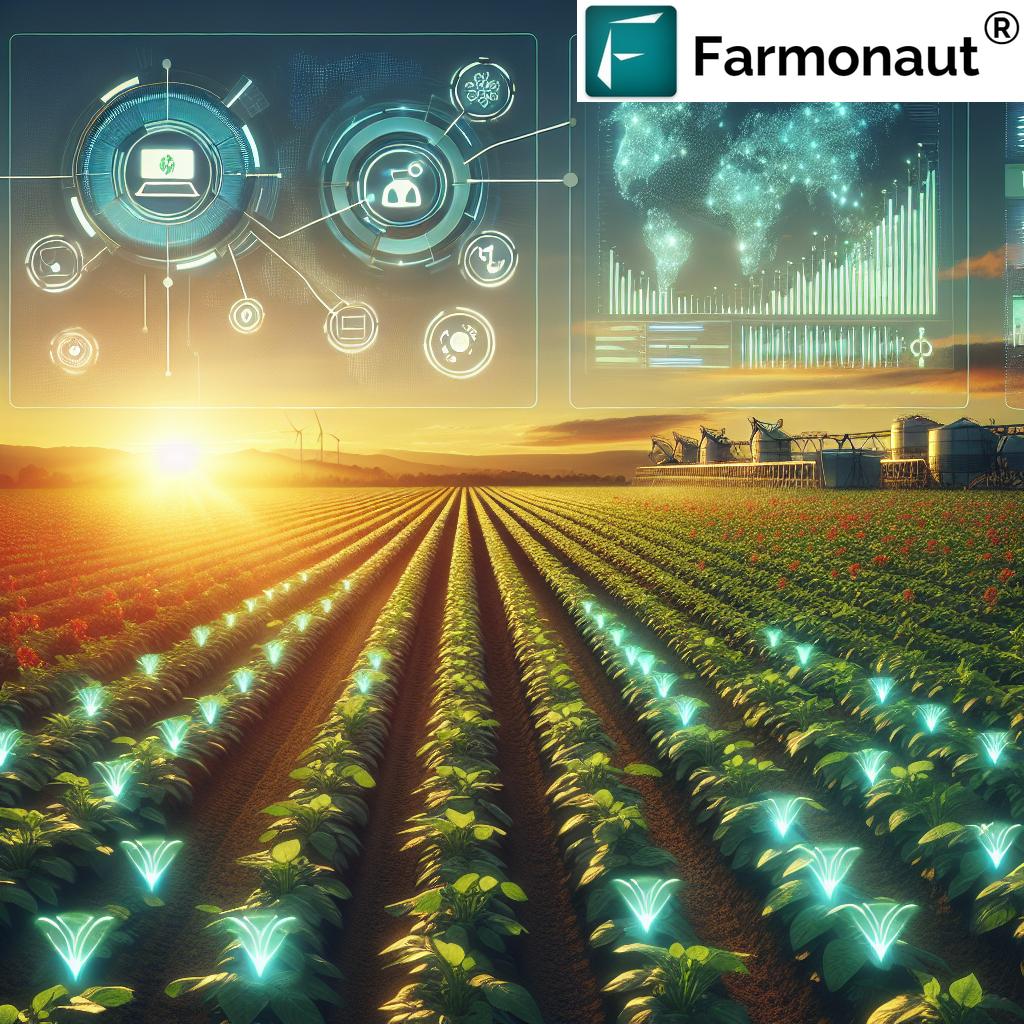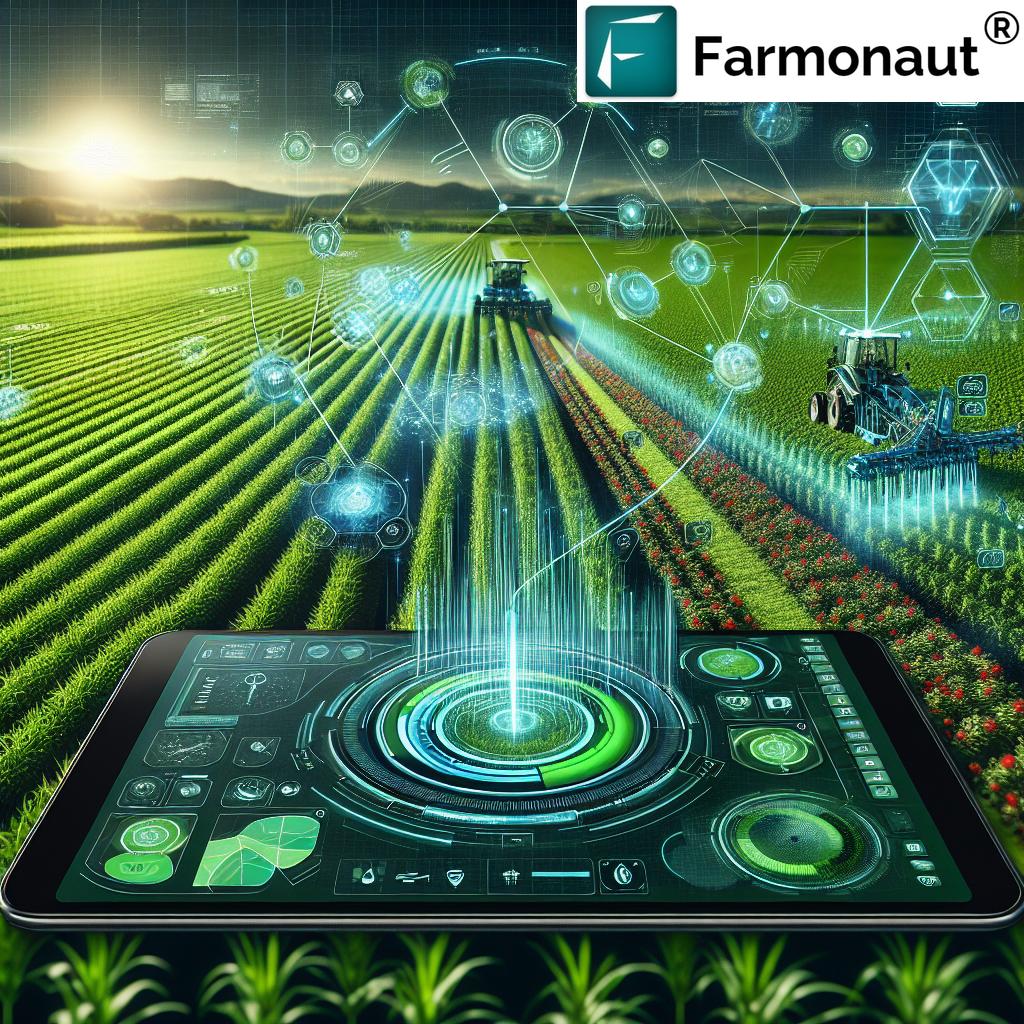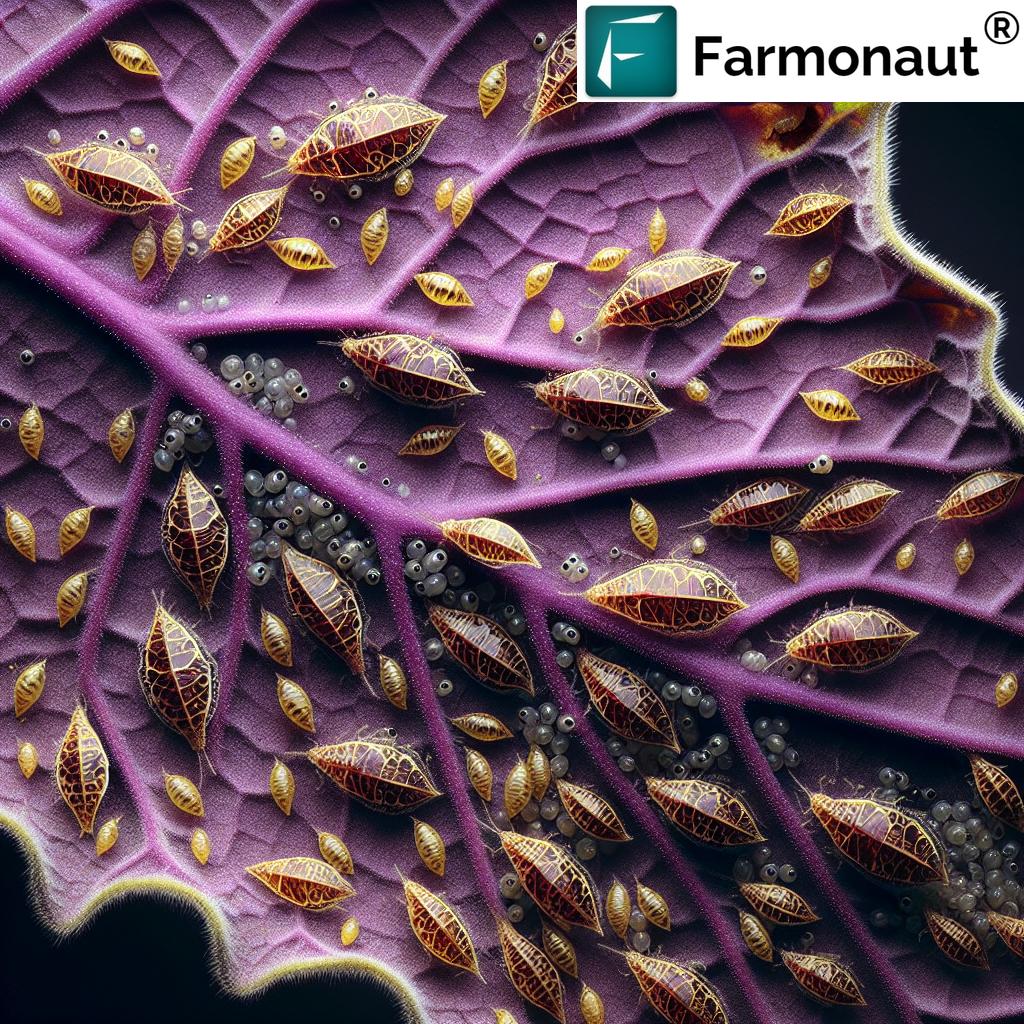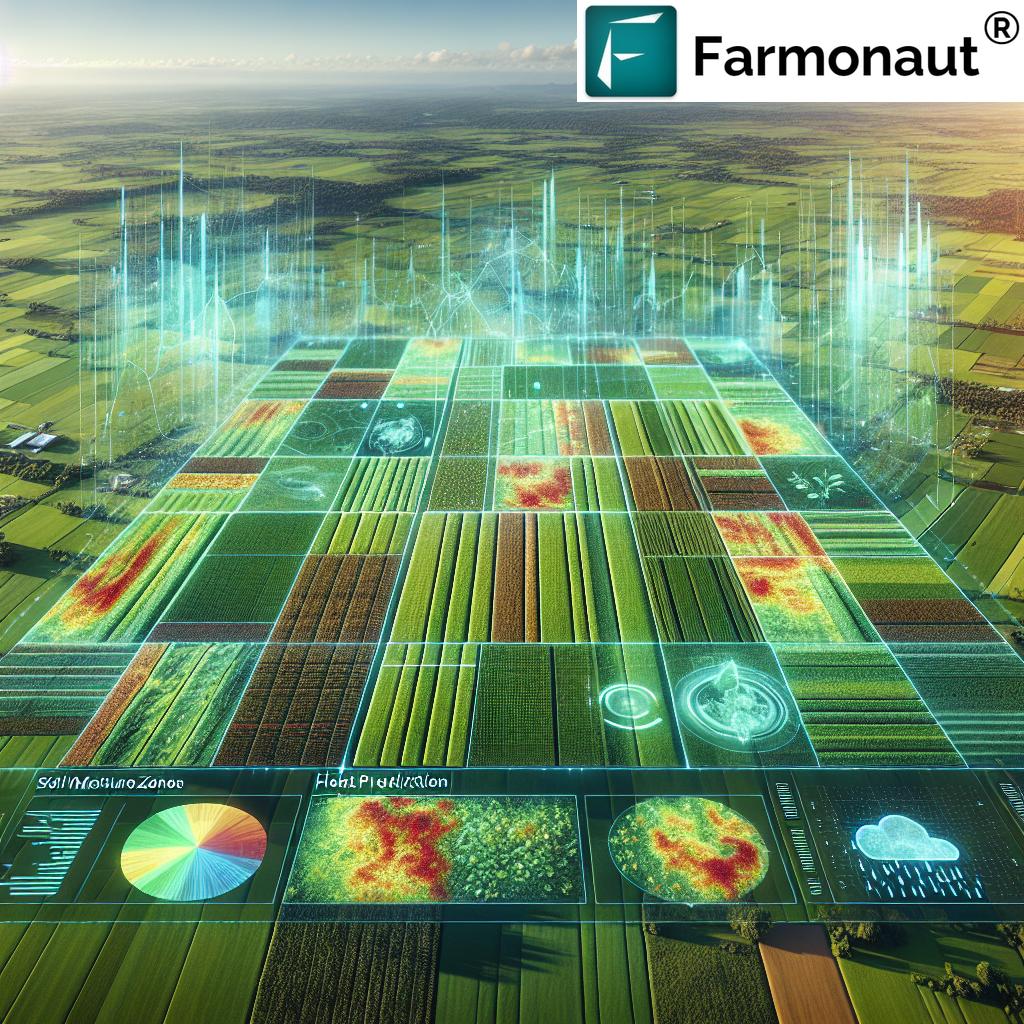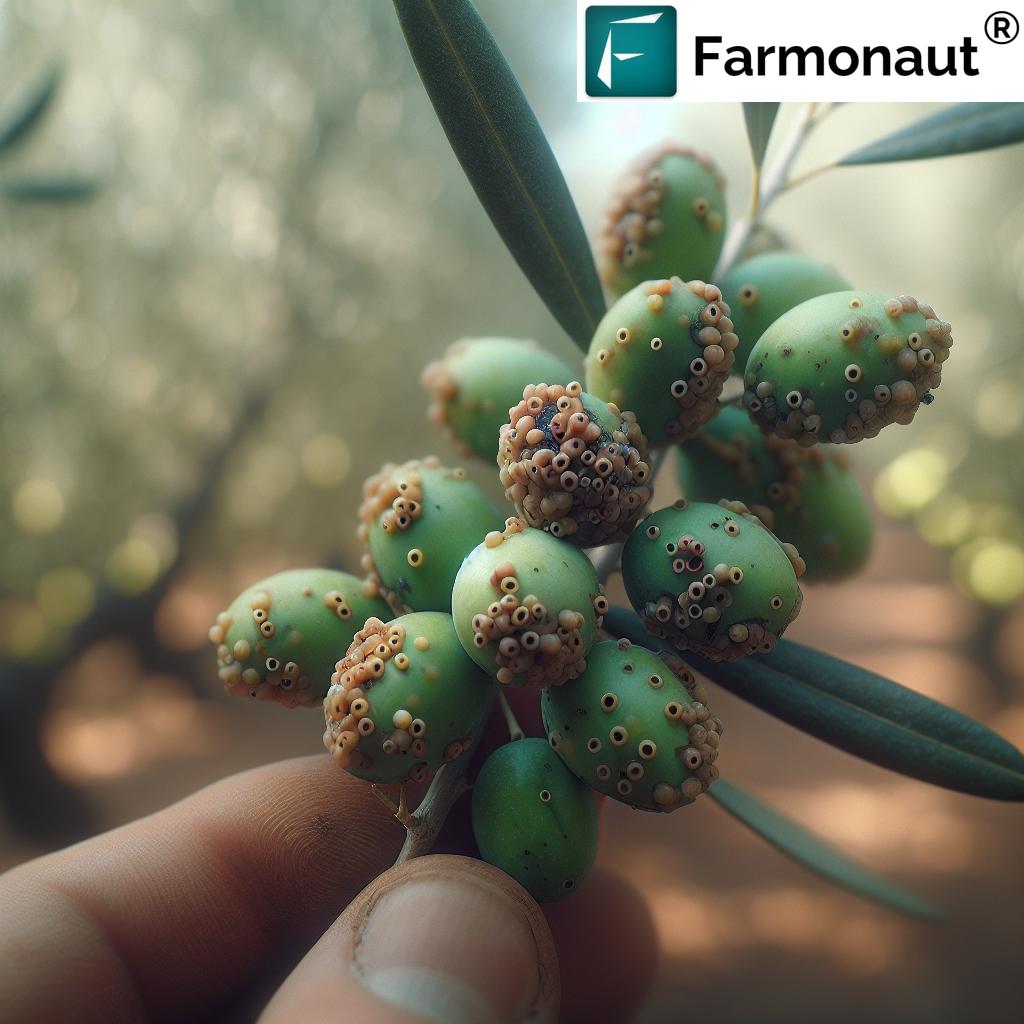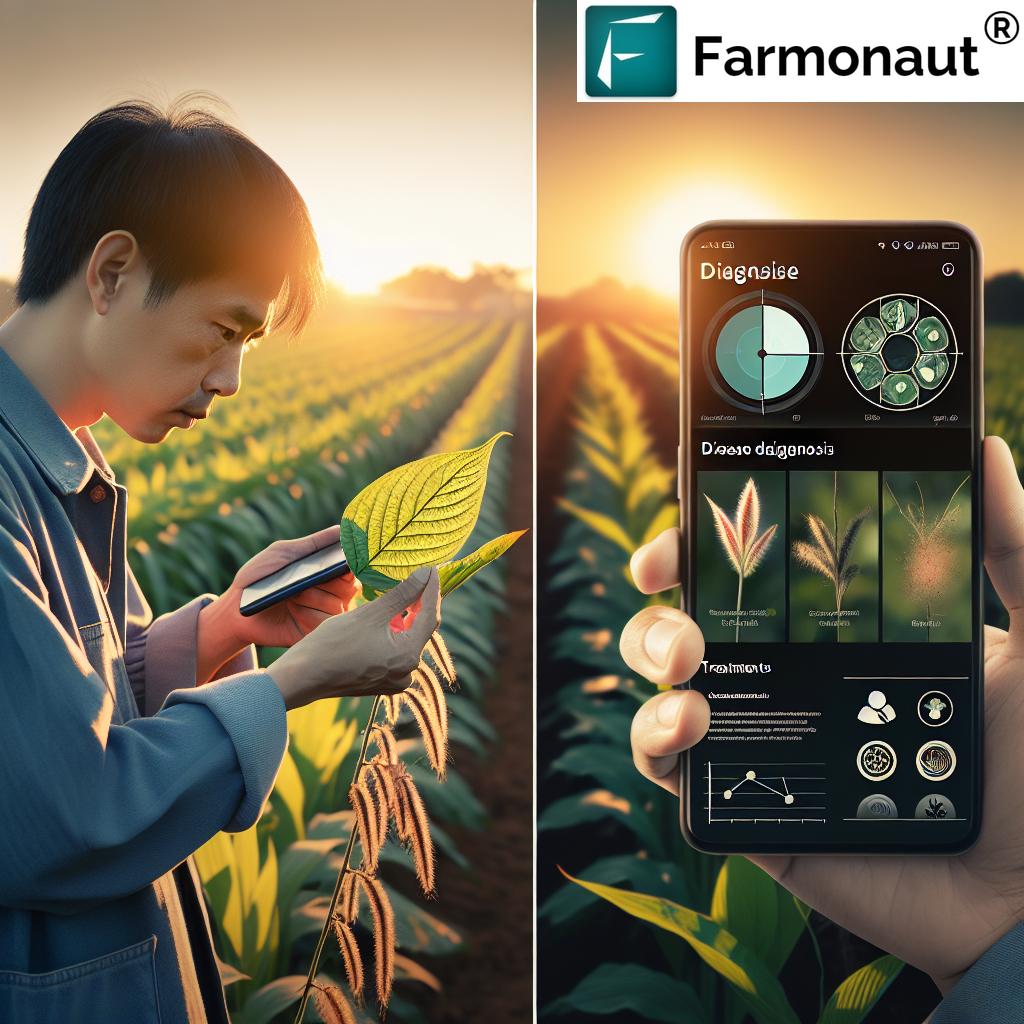Revolutionizing Agriculture: How Remote Sensing and AI Drive Precision Farming Innovation
“Satellite imagery analysis can detect crop stress up to 2 weeks earlier than visual inspection, enabling timely interventions.”
Welcome to the future of farming! At Farmonaut, we’re at the forefront of precision agriculture technology, harnessing the power of remote sensing in agriculture to transform the way we grow food. In this comprehensive blog post, we’ll explore how cutting-edge technologies are revolutionizing the agricultural landscape, boosting productivity, and promoting sustainability.
The Dawn of Precision Agriculture
Precision agriculture is not just a buzzword; it’s a paradigm shift in farming practices that leverages data, technology, and analytics to optimize crop yields and resource utilization. At the heart of this revolution lies remote sensing, a technology that allows us to gather crucial information about crops and soil without physical contact.
Our journey into precision farming begins with an understanding of how remote sensing and artificial intelligence (AI) work together to create a new era of agricultural innovation.
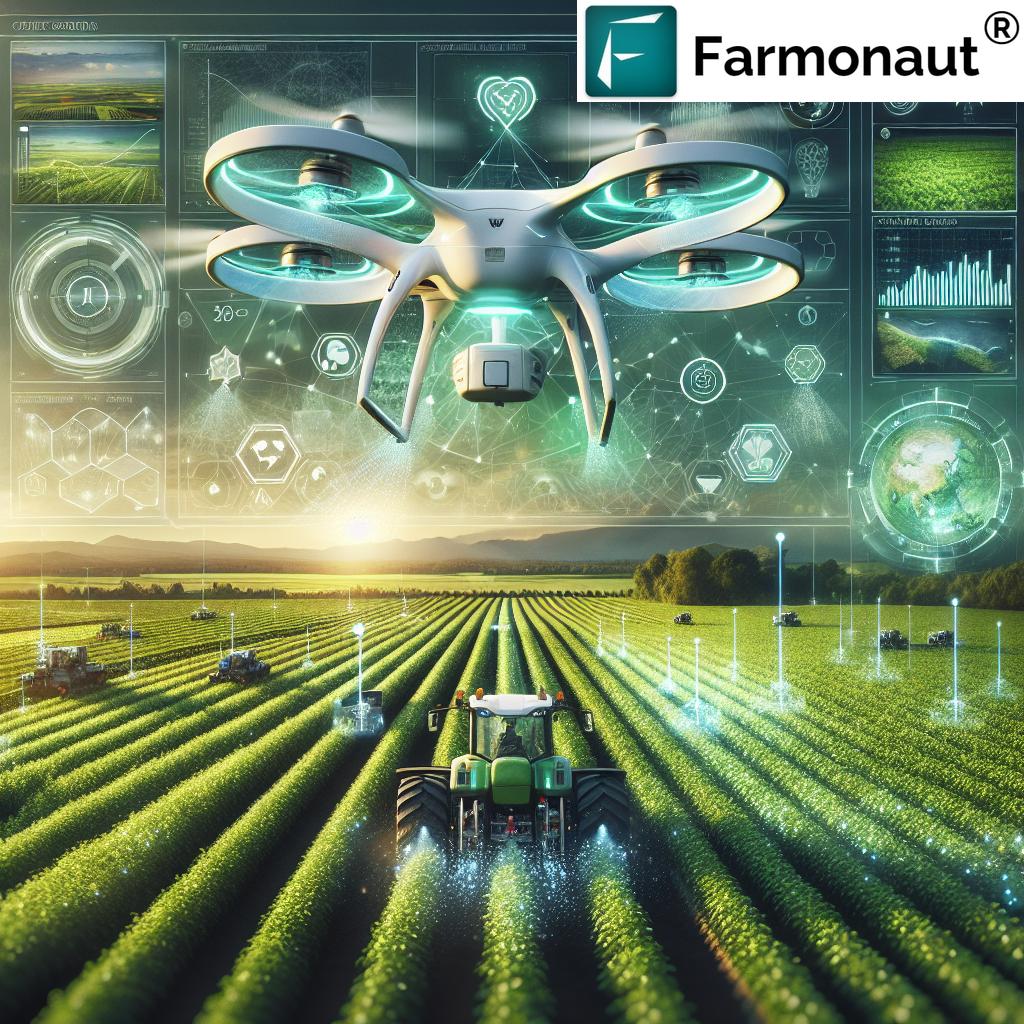
Remote Sensing: The Eyes in the Sky
Remote sensing in agriculture involves collecting data about crops and land from a distance, typically using satellites or drones. This technology provides farmers with a bird’s-eye view of their fields, offering insights that would be impossible to gather from ground level alone.
- Satellite Imagery for Agriculture: High-resolution satellite images capture vast areas of farmland, providing regular updates on crop health and field conditions.
- Agricultural Drone Solutions: Drones equipped with specialized cameras can capture detailed images and data at lower altitudes, complementing satellite data for more precise analysis.
These technologies form the backbone of modern crop monitoring systems, enabling farmers to make data-driven decisions with unprecedented accuracy.
AI and Machine Learning: The Brain Behind the Operation
While remote sensing provides the raw data, it’s the power of AI in agriculture that transforms this information into actionable insights. Machine learning algorithms analyze vast amounts of data to identify patterns, predict outcomes, and generate recommendations.
- Crop Yield Prediction: AI models can forecast crop yields with remarkable accuracy, helping farmers and agribusinesses plan for the future.
- Pest and Disease Detection: Machine learning algorithms can identify early signs of pest infestations or disease outbreaks, allowing for timely interventions.
At Farmonaut, we’ve developed sophisticated AI systems that work in tandem with our remote sensing technologies to provide farmers with unparalleled insights into their operations.
The Power of Farm Data Analytics
Farm data analytics is the process of collecting, processing, and analyzing agricultural data to improve decision-making. This field has seen exponential growth with the advent of IoT devices, sensors, and advanced analytics tools.
- Soil Analysis Technology: Advanced sensors and spectral analysis techniques provide detailed information about soil composition, moisture levels, and nutrient content.
- Weather Pattern Analysis: By integrating historical weather data with current conditions, we can predict future weather patterns and their potential impact on crops.
These analytical tools form the foundation of smart farming applications, enabling farmers to make informed decisions about planting, irrigation, and harvesting.
Digital Farming Solutions: Bringing It All Together
Digital farming solutions integrate various technologies to create comprehensive platforms for agricultural management. These solutions often include:
- Farm Management Software: Centralized platforms that allow farmers to track all aspects of their operations, from planting to harvest.
- Agricultural IoT Solutions: Networks of connected devices that collect and transmit data in real-time, providing up-to-the-minute information on field conditions.
- Precision Irrigation Systems: Smart irrigation systems that use data from soil moisture sensors and weather forecasts to optimize water usage.
At Farmonaut, our digital farming platform combines these elements to offer a holistic solution for modern agriculture.
“AI-powered crop yield prediction models can achieve accuracy rates of up to 90% when combined with remote sensing data.”
Sustainable Farming Practices: The Future of Agriculture
As we push the boundaries of agricultural productivity, it’s crucial to consider the environmental impact of our practices. Sustainable farming practices are not just an ethical choice; they’re a necessity for long-term food security.
- Resource Optimization: Precision agriculture technologies help minimize waste by ensuring that water, fertilizers, and pesticides are used only where and when they’re needed.
- Soil Conservation: By monitoring soil health and promoting practices like crop rotation and cover cropping, we can preserve soil quality for future generations.
- Biodiversity Preservation: Advanced monitoring techniques help identify and protect areas of high biodiversity within agricultural landscapes.
Our commitment to sustainability is reflected in every aspect of our technology, from our satellite-based monitoring systems to our AI-powered advisory services.
Crop Health Monitoring: The Key to Optimal Yields
Crop health monitoring is a critical aspect of modern agriculture, and it’s an area where remote sensing and AI truly shine. By leveraging multispectral imagery and advanced analytics, we can detect early signs of stress in crops long before they’re visible to the naked eye.
- Vegetation Indices: Metrics like the Normalized Difference Vegetation Index (NDVI) provide valuable insights into crop health and vigor.
- Thermal Imaging: Heat signatures can reveal areas of water stress or disease in crops, allowing for targeted interventions.
- Hyperspectral Analysis: This advanced technique can detect subtle changes in plant chemistry, indicating nutrient deficiencies or the presence of pests.
Our crop monitoring systems at Farmonaut integrate these technologies to provide farmers with a comprehensive view of their crop health, enabling proactive management and maximizing yields.
Explore our API for advanced satellite and weather data integration
Agricultural Data Visualization: Making Sense of Complex Information
Agricultural data visualization is the art and science of presenting complex agricultural data in an intuitive, visually appealing format. This is crucial for helping farmers and agronomists quickly understand and act on the wealth of information provided by precision agriculture technologies.
- Interactive Maps: Geospatial visualizations allow users to explore different layers of data, from soil composition to crop health, in an interactive format.
- Time-Series Animations: Dynamic visualizations show how crop conditions change over time, helping identify trends and patterns.
- Dashboard Interfaces: Customizable dashboards bring together key metrics and alerts, providing a snapshot of farm performance at a glance.
At Farmonaut, we’ve invested heavily in developing intuitive data visualization tools that make our complex analyses accessible and actionable for farmers of all technical backgrounds.
Check out our API Developer Docs for detailed integration guidelines
The Role of Blockchain in Agriculture
While not directly related to remote sensing, blockchain technology is playing an increasingly important role in modern agriculture, particularly in supply chain management and traceability.
- Supply Chain Transparency: Blockchain creates an immutable record of a product’s journey from farm to table, enhancing trust and accountability.
- Smart Contracts: Automated agreements can streamline transactions between farmers, suppliers, and buyers, reducing administrative overhead.
- Data Integrity: Blockchain can ensure the integrity of agricultural data, from sensor readings to satellite imagery, by creating tamper-proof records.
At Farmonaut, we’re exploring ways to integrate blockchain technology into our platform to enhance traceability and build trust in the agricultural supply chain.
The Future of Precision Agriculture
As we look to the future, the potential for precision agriculture to transform farming is truly exciting. Some areas of innovation we’re particularly excited about include:
- Edge Computing: Processing data closer to the source (e.g., on drones or in-field sensors) will enable real-time decision-making and reduce latency.
- 5G Networks: High-speed, low-latency 5G networks will facilitate the rapid transfer of large datasets, enabling more sophisticated real-time analytics.
- Advanced Robotics: Autonomous robots for planting, weeding, and harvesting will work alongside AI and remote sensing technologies to further optimize farm operations.
At Farmonaut, we’re constantly innovating to stay at the forefront of these technological advancements, ensuring that our farmers have access to the most cutting-edge tools and insights.
Comparative Analysis: Traditional Farming vs. Farmonaut Satellite System
| Aspect | Traditional Farming | Farmonaut Satellite System |
|---|---|---|
| Crop Monitoring Frequency | Weekly/Monthly | Daily |
| Data Accuracy | Moderate (visual inspection) | High (multispectral analysis) |
| Resource Optimization | Basic (experience-based) | Advanced (data-driven, up to 30% improvement) |
| Early Issue Detection | Limited (visible symptoms) | Advanced (pre-visual detection) |
| Yield Prediction Capability | Low (historical averages) | High (AI-powered, up to 90% accuracy) |
| Time Savings | Baseline | Significant (up to 50% reduction in monitoring time) |
| Cost-Effectiveness | Variable | High (reduced inputs, increased yields) |
| Environmental Impact | Moderate to High | Low (optimized resource use) |
This comparison clearly demonstrates the advantages of Farmonaut’s satellite-based system over traditional farming methods, highlighting the significant improvements in efficiency, accuracy, and sustainability that precision agriculture technologies can bring to modern farming practices.
Empowering Farmers with Farmonaut
At Farmonaut, we’re committed to making advanced precision agriculture technologies accessible to farmers of all sizes. Our platform integrates satellite imagery, AI-powered analytics, and user-friendly interfaces to provide a comprehensive farm management solution.
- Real-time Crop Monitoring: Our satellite-based monitoring system provides daily updates on crop health and field conditions.
- AI-powered Insights: Our advanced algorithms analyze multiple data sources to provide actionable recommendations for crop management.
- User-friendly Interface: Our mobile and web applications make it easy for farmers to access crucial information anytime, anywhere.
- Customizable Alerts: Farmers can set up personalized alerts for various conditions, ensuring they never miss critical information about their crops.
By leveraging these tools, farmers can make more informed decisions, optimize their resource use, and ultimately increase their profitability while promoting sustainable practices.
Frequently Asked Questions
Q: How accurate is satellite-based crop monitoring?
A: Satellite-based crop monitoring can be highly accurate, with our system capable of detecting changes in crop health with over 90% accuracy in many cases. However, factors such as cloud cover and the specific crop type can influence accuracy.
Q: Can small-scale farmers benefit from precision agriculture technologies?
A: Absolutely! Our platform is designed to be scalable and affordable, making it accessible to farmers of all sizes. Even small improvements in efficiency can lead to significant benefits for small-scale farmers.
Q: How often is satellite imagery updated?
A: Our system provides daily updates for most areas, weather permitting. This frequent update schedule ensures that farmers always have access to the most current information about their fields.
Q: Is it difficult to interpret the data provided by precision agriculture systems?
A: While the underlying data can be complex, our platform is designed to present information in an easy-to-understand format. We provide clear visualizations and actionable insights that don’t require advanced technical knowledge to interpret.
Q: How does precision agriculture contribute to sustainability?
A: Precision agriculture promotes sustainability by optimizing resource use, reducing waste, and minimizing the environmental impact of farming practices. By applying inputs only where and when they’re needed, we can significantly reduce the overall use of water, fertilizers, and pesticides.
Conclusion: Embracing the Future of Farming
As we’ve explored throughout this post, the integration of remote sensing, AI, and other advanced technologies is revolutionizing agriculture. At Farmonaut, we’re proud to be at the forefront of this transformation, providing farmers with the tools they need to thrive in an increasingly complex and challenging environment.
By embracing precision agriculture technologies, farmers can not only improve their productivity and profitability but also contribute to a more sustainable and food-secure future for all. We invite you to join us on this exciting journey into the future of farming.
Ready to experience the power of precision agriculture for yourself? Explore our platform and see how Farmonaut can transform your farming operations.
Join the precision agriculture revolution today and unlock the full potential of your farm with Farmonaut!




